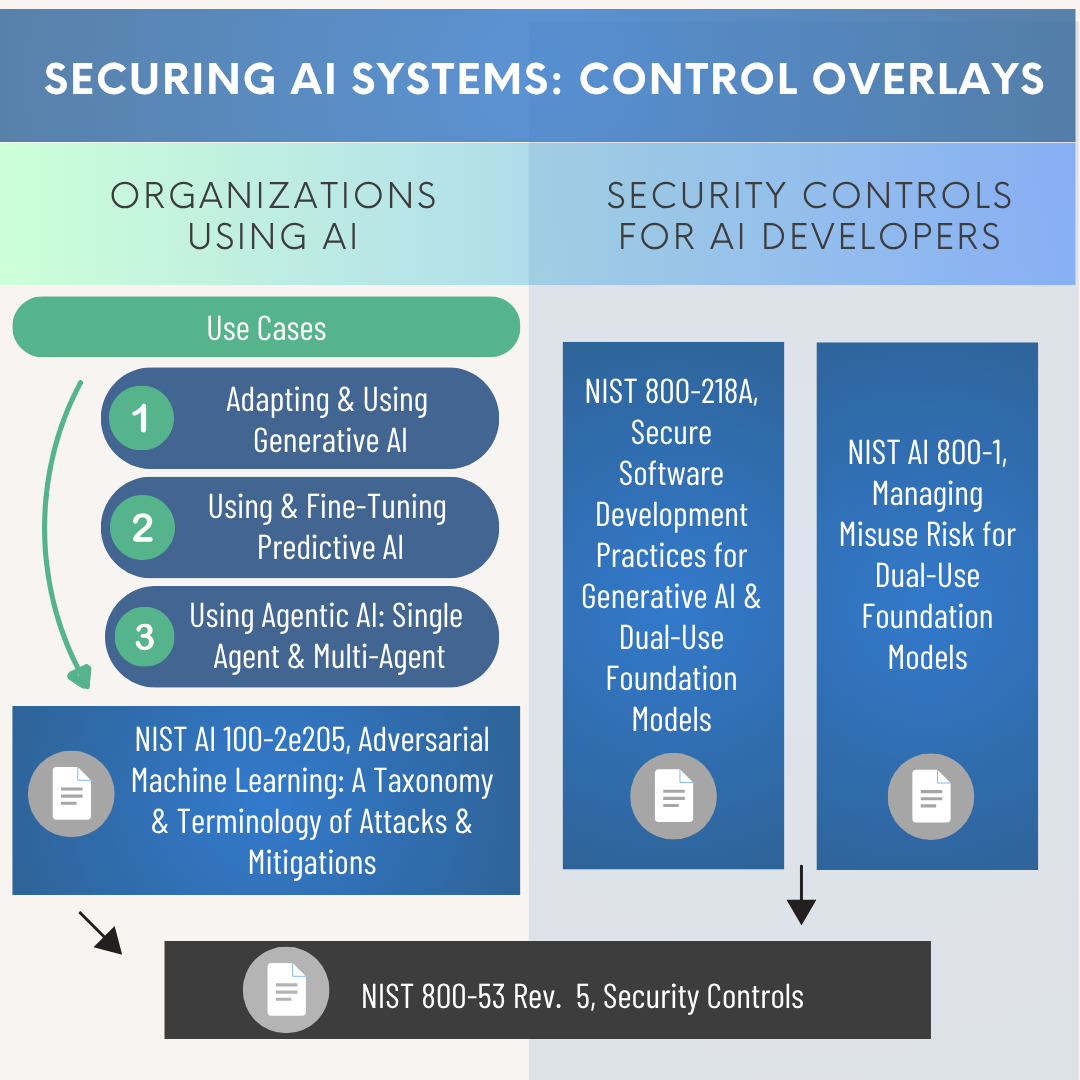As evidence increases that malicious actors can penetrate AI platforms to generate fraudulent queries, to the detriment of legitimate AI users; the need to secure these platforms grows in urgency.
Toward that goal, the National Institute of Standards and Technology (NIST), has released a concept paper toward securing AI platform. As one of the crown jewels of US technology know-how, NIST created standards for time and measurement more than a century ago.
In August, NIST released a concept paper and proposed action plan for developing a series of control overlays for securing AI systems, and has launched a Slack channel for the AI community of interest.

The concept paper outlines proposed AI use cases for the control overlays to manage cybersecurity risks in the use and development of AI systems, and next steps. The use cases address generative AI, predictive AI, single and multi-agent AI systems, and controls for AI developers.
Proposed use-cases
The overlays are focused on protecting the confidentiality, integrity, and availability of information and users for each of the following proposed use cases:
- Adapting and Using Generative AI – Assistant/Large Language Model (LLM)
- Using and Fine-Tuning Predictive AI
- Using AI Agent Systems (AI Agents) – Single Agent
- Using AI Agent Systems (AI Agents) – Multi-Agent
- Security Controls for AI Developers
Fine-tuning
NIST requests feedback on the concept paper and proposed action plan, and has invited all interested parties to join the NIST Overlays for Securing AI (#NIST-Overlays-Securing-AI) Slack channel.
Learn more about the Control Overlays for AI Project, Slack space, and how to join the Slack channel at https://csrc.nist.gov/projects/cosais. Questions and comments can be directed to overlays-securing-ai@list.nist.gov.
Further reading
NIST releases Control Overlays for Securing AI Systems concept paper. Press release. August 14, 2025. National Institute for Standards and Technology (NIST), US government
SP 800-53 Control Overlays for Securing AI Systems COSAiS. Landing page. Accessed August 20, 2025. NIST
Why it matters
Through the Slack channel, stakeholders can contribute to the development of these overlays, get updates, engage in facilitated discussions with the NIST principal investigators and other subgroup members, and provide real-time feedback and comments.











